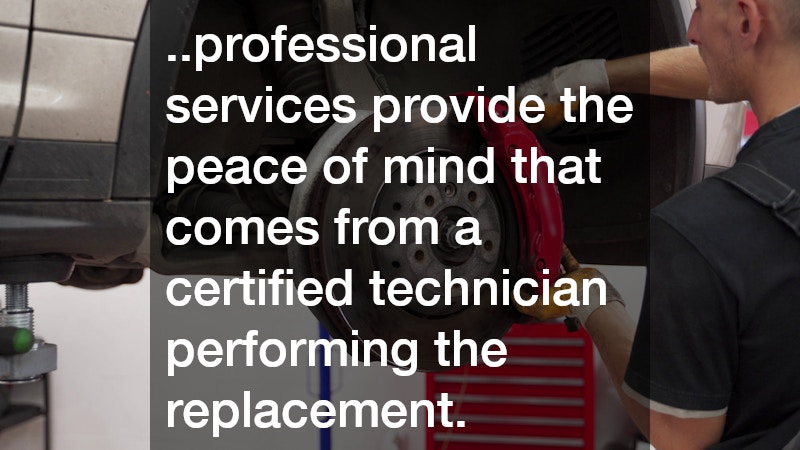Brakes are among the most vital components of your vehicle, directly responsible for your safety and that of other road users. Ignoring signs that your brakes require attention can lead to safety hazards, increasing the chances of accidents, which is why brake maintenance is crucial.
Proper brake maintenance ensures optimal vehicle performance and extends the lifespan of your braking system. It can also help you avoid expensive repairs that may arise from neglected brake systems.
Addressing brake issues promptly reduces the risk of complete brake failure, which can potentially lead to catastrophic accidents. It’s essential to be vigilant for any signs that indicate the necessity for brake replacement.
What Are the Common Signs That Your Brakes Need Replacement?
Noise Indicators
One of the most noticeable signs that your brakes need replacement is unusual noise, such as screeching, squealing, or grinding. These noises often indicate that the brake pads are worn down and may lead to damage to other braking components if not addressed.
Screeching or squealing sounds are generally caused by metal wear indicators scraping against the rotor, signaling that it’s time for a new set of pads. Ignoring these sounds can lead to more severe damage, such as rotor wear, which is more costly to repair.
Grinding noises, on the other hand, suggest that the brake pad material has completely worn away. This metal-on-metal contact can severely damage the rotors, potentially leading to compromised braking performance and expensive repairs.
Performance Issues
Reduced braking performance is another critical indicator of worn brakes. If you notice that your vehicle takes longer to stop or if the brake pedal feels spongy, it may be time to inspect your brakes.
Another performance issue to watch for is vibration or pulsation in the brake pedal during braking, which often suggests warped rotors. Addressing these symptoms early can prevent further damage and assure that your brakes remain functional.
Regularly monitoring your vehicle’s brake performance can help you identify issues early and maintain optimal road safety. Preventive measures can also prevent sudden brake failure and potential accidents.
How Often Should I Replace My Brake Pads?
Standard Replacement Intervals
The frequency of brake pad replacement largely depends on the manufacturer’s recommendations and your driving habits. On average, brake pads should be replaced every 20,000 to 60,000 miles.
For accurate timing, consult your service manual or ask a professional mechanic for advice tailored to your specific vehicle and driving conditions. Proactive brake maintenance can help you avoid unnecessary expenses and assure safe driving.
Factors Affecting Brake Pad Lifespan
Several factors can influence the lifespan of your brake pads, including driving style, type of vehicle, and pad quality. Aggressive braking and frequent stop-and-go traffic can significantly reduce the lifespan of brake pads.
Additionally, heavy vehicles and driving in hilly or mountainous areas put more stress on brakes, leading to faster wear. Investing in high-quality brake pads can also enhance performance and extend the lifespan of your braking system.
Understanding these factors can help you make informed decisions about brake maintenance and replacements. By adjusting your driving habits and choosing quality components, you can maximize the lifespan of your brake pads.
Can I Replace My Brakes Myself?
Required Tools and Skills
Replacing your brake pads can be a viable option if you possess the necessary tools and mechanical skills. Essential tools include a lug wrench, jack, jack stands, socket wrench, and C-clamp, among others.
Additionally, a basic understanding of automotive repair and attention to detail can assure a successful DIY brake replacement. However, it’s crucial to follow safety protocols and consult resources if you’re unsure about any step.
DIY brake replacement can be a cost-effective option for those with mechanical aptitude, allowing you to save on labor costs. Nevertheless, safety should always be the high-quality priority, and professional assistance is recommended if you’re uncertain about the process.
Pros and Cons of DIY Brake Replacement
One significant advantage of replacing your brakes yourself is the potential cost savings from avoiding labor fees. It also provides a sense of accomplishment and the opportunity to learn more about your vehicle.
However, DIY brake replacement comes with risks, particularly if you lack experience or proper tools. Incorrect installation can compromise your safety, making it crucial to weigh the benefits against the potential drawbacks.
What Are the Costs Involved in Replacing Brakes?
DIY vs. Professional Service Costs
Choosing a DIY brake replacement can significantly reduce costs, as labor charges are eliminated. The primary expenses will include the cost of brake pads, hardware, and any necessary tools or materials.
In contrast, professional services provide the peace of mind that comes from a certified technician performing the replacement. Although more expensive, professional service assures a high level of experience and attention to detail.
In conclusion, recognizing the signs that your brakes need replacement and understanding the maintenance requirements is essential for vehicle safety and performance. Regular inspection and timely replacement can avert potential road hazards and costly repairs.
Whether opting for professional service or a DIY approach, making sure that your brakes are functioning correctly is non-negotiable. Prioritizing brake maintenance not only protects you and your passengers but also contributes to safer roadways.




